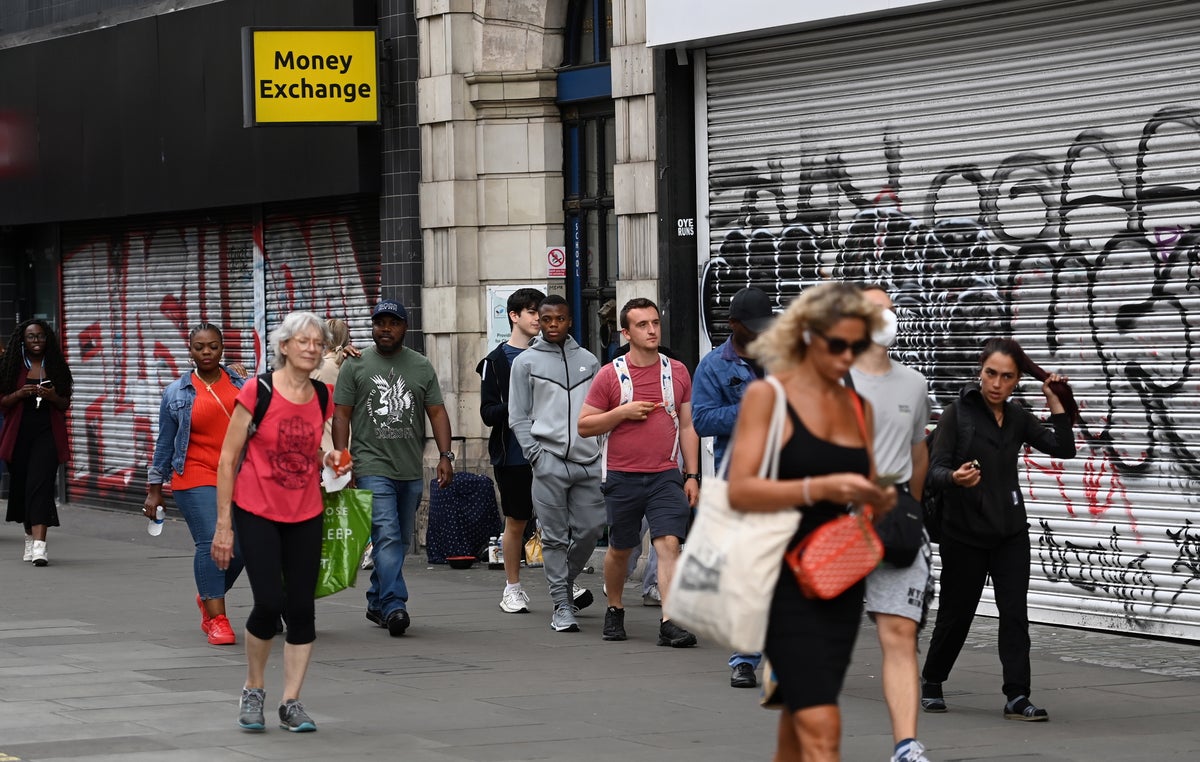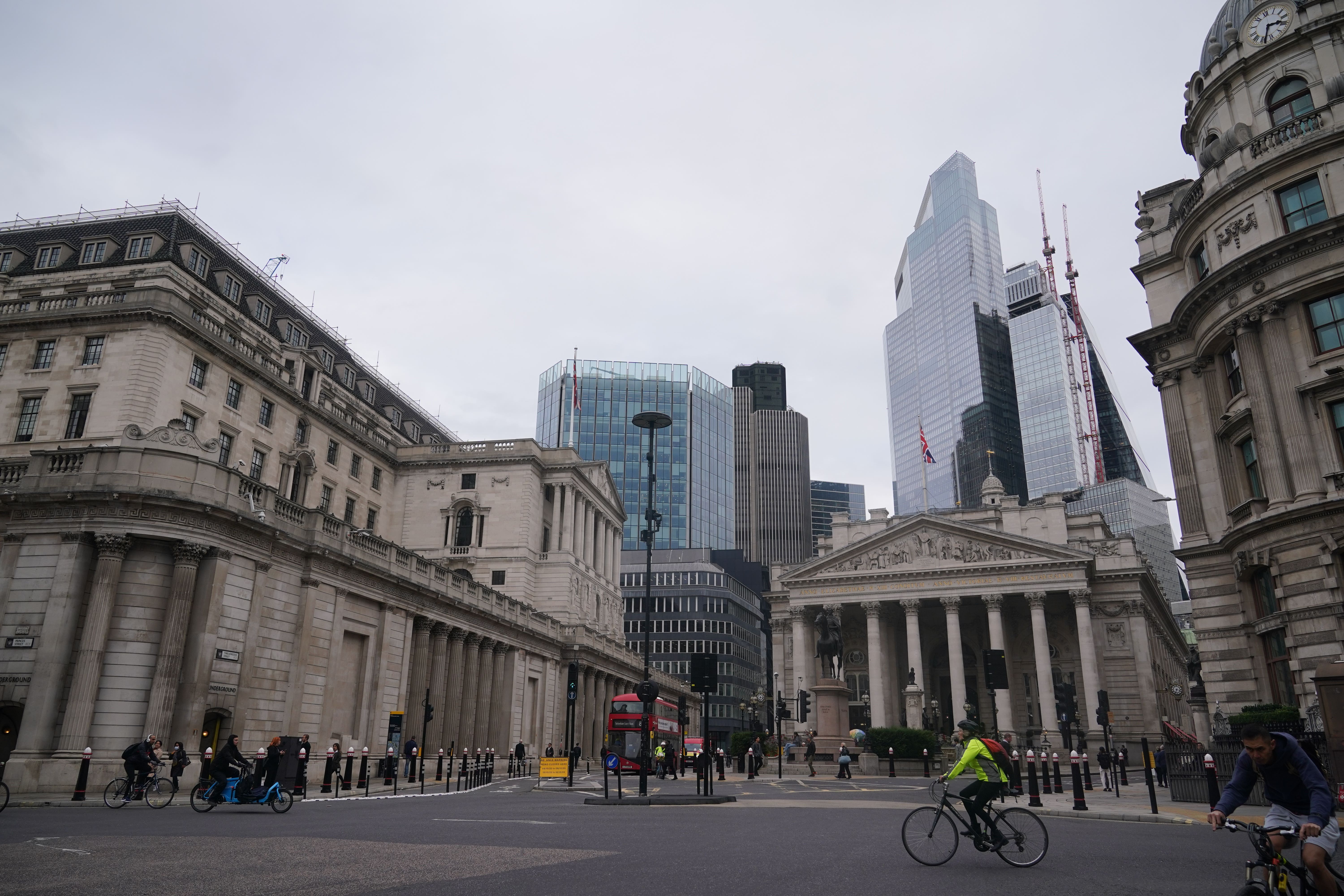
The UK will enter a recession until summer 2023, economists have warned.
Britain’s economy is expected to shrink around 0.2 per cent each quarter from October through to June next year.
This prolonged economic decline will result in a 0.3 per cent fall in gross domestic product (GDP) for 2023 as a whole, the EY Item Club predicted in its autumn forecast.
An economy enters a technical recession when its GDP falls for two or more consecutive quarters.
The economic forecasting group has significantly downgraded its previous summer forecast which estimated the economy would grow by 1 per cent in 2023.
A combination of high energy prices, surging inflation, rising interest rates and global economic weakness have driven up the likelihood that the UK economy will face a recession until the middle of next year.
However, the risk of a severe downturn has been reduced by the government’s energy bills cap, EY Item Club said, meaning that it will not be as bad as previous recessions.
The government intervened in early September to put a ceiling on energy bills at £2,500 a year for the typical household, and has since pledged to cover a proportion of rocketing electricity costs for businesses as well. The move is set to ease the pressure on household incomes and prevent the collapse of businesses that would otherwise be unable to afford the mounting bills.
Furthermore, once high inflation eases, the weaker pound boosts exports and the Bank of England’s interest rate hikes end, GDP should return to growth in the second half of 2023, EY said.
The economy is then expected to expand by 2.4 per cent in 2024 and 2.3 per cent in 2025.

But the group warned that there is a risk that growth could be dragged down by further economic shocks.
Hywel Ball, EY’s UK chair, said: “There’s no doubt the UK economy faces a difficult period ahead, with global headwinds adding to domestic pressures.
“The silver lining is that the government’s intervention on energy bills is expected to limit the extent of the downturn, while ONS data suggests that households have access to a larger cushion of pandemic savings than previously thought.
“Nevertheless, there are very significant risks to the forecast, with the potential for further surprises or global instability creating additional drags on growth.
“Businesses will need to think very carefully about their resilience and plan for different scenarios, while also being mindful of the support they provide to their customers and employees.”
The energy support package is also expected to tame inflation which could peak at just below 11 per cent in October, lower than the 15 per cent that it could have hit without an intervention.
However, annual inflation is still expected to outstrip wage growth until 2024, meaning that people will see their disposable incomes squeezed.
The decline in spending power over the next year will be the biggest drop since the 1970s, EY warned.
But by 2024, inflation will fall back to below the Bank of England’s 2 per cent target, dropping to 1.8 per cent, according to the forecast.
A Goldman Sachs economic forecast spelled more trouble for Liz Truss as analysts downgraded Britain's economic outlook after Kwasi Kwarteng was removed as chancellor and the prime minister reversed a freeze in corporation tax, Bloomberg News reported on Sunday.
“Folding in weaker growth momentum, significantly tighter financial conditions, and the higher corporation tax from next April, we downgrade our UK growth outlook further and now expect a more significant recession," Bloomberg cited the investment bank's report as saying.
Goldman revised its 2023 UK economic output forecast to a 1 per cent contraction from an earlier forecast for a 0.4 per cent output drop, with core inflation seen at 3.1 per cent at the end of 2023, down from 3.3 per cent previously.
The forecast comes as the Bank of England warned on Saturday that interest rates might have to be raised higher than initially expected to tackle inflation.
Governor Andrew Bailey said the bank “will not hesitate to raise interest rates to curb inflation” and revealed that he had already spoken to new chancellor Jeremy Hunt, saying the pair had an “immediate meeting of minds”.
“As things stand today, my best guess is that inflationary pressures will require a stronger response than we perhaps thought in August,” he told an event in Washington over the weekend.
The Bank is due to announce its next decision on interest rates on 3 November, and many investors think it will either raise them from their current level of 2.25 per cent to 3 per cent or possibly 3.25 per cent, both of which would be much bigger moves than usual.
In his speech, Mr Bailey referenced the market turmoil that followed the government’s mini-Budget, adding: “UK financial markets have experienced some violent moves in the last few weeks, particularly at the long end of the government debt market.
“This has put the spotlight on flaws in the strategy and structure of one important part of a lot of pension funds. The Bank of England has had to intervene to deal with a threat to the stability of the financial system, our other core objective.
“There may appear to be a tension here between tightening monetary policy as we must, including so-called quantitative tightening, and buying government debt to ease a critical threat to financial stability.
“This explains why we have been clear that our interventions on the latter point are strictly temporary and have been designed to do the minimum possible or necessary.”







